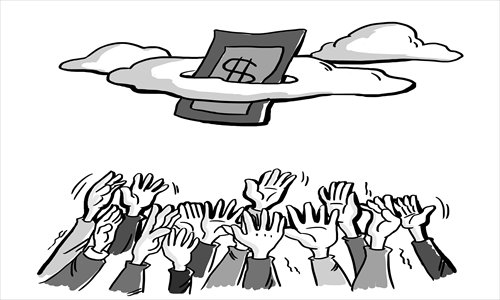Cost pressure squeezes Asian growth

I attended a meeting in Chengdu, Sichuan Province last week. The most frequent word mentioned by local officials and scholars there was "industry." They are very proud that the number of local jobs created in Sichuan has now surpassed the number of workers leaving to work outside the province, since Sichuan has been known for migrant workers for several decades.
What has caused this rise in jobs? Besides the stimulus of certain industrial policies, the labor price advantage is one of the main factors. Apple has set up a factory in Sichuan, reportedly employing over 100,000 workers. The minimum wage of the workers is 1,880 yuan ($300) per month, approximately the same as the salary of senior managers of garment factories in Cambodia.
Coincidentally, I read an article in a Japanese paper recently, which said that overseas-made but Japanese branded vehicles were on sale in the Japanese auto market for the first time. This could be viewed as one of the signs that Japanese enterprises are accelerating their steps of moving overseas, symbolizing that more and more Japanese products are likely to be made outside Japan in the future.
It's a signal that enterprises upstream are shifting labor price pressure to those downstream. Both cases reminded me of my interview trip to Cambodia a few days ago.
When I was visiting the largest market on the frontier of Cambodia, a young Cambodian man promoted a purple T-shirt to me, "100 Thai baht for one," he said. I quickly made a calculation; it was just over 20 yuan ($3.30), very cheap even in China.
The young man said his T-shirts were mainly imported from China. He didn't know why they were so cheap.
The man previously worked in a factory in Phnom Penh with a monthly salary of over $100, but his income could be over 10 times better. He earned five Thai baht from each T-shirt. If he was lucky, he could make $100 a day through selling the shirts wholesale. "I wouldn't set up a stall here if there weren't Chinese products as cheap as these!" the young man said.
But those women workers in the garment factories in Phnom Penh are not as wise as the young man.
They are satisfied with their monthly salary of over $100, which is much higher than the Cambodian minimum wage of $66.
One woman worker told me that she is expecting a salary rise, but is satisfied with her current income.
I don't know to what extent these Chinese T-shirt manufacturers could further bring down labor costs.
Hundreds of thousands of agricultural workers are waiting for the chance to enter into the manufacturing industry, even at a relatively low wage level, while those enterprises upstream are striving to suppress labor prices as much as possible, in order to meet the demand of the large number of low-level consumers during the economic downturn.
Both Sichuan and Cambodia, although their development levels are different, have the same tasks of increasing employment and realizing urbanization. It's a necessary step to move from the undeveloped stage to the developed stage.
But the current problem is that against the background of globalization, the amount of available labor is growing due to urbanization while the pressure on enterprises upstream is also increasing.
There isn't adequate time for these workers to accumulate wealth. This is perhaps the biggest problem blocking the sustainable development of the Asian economy. If countries cannot deal with these workers properly, they may turn into great social pressure.
The author is a senior editor with People's Daily. He's now stationed in Bangkok. dinggang@globaltimes.com.cn